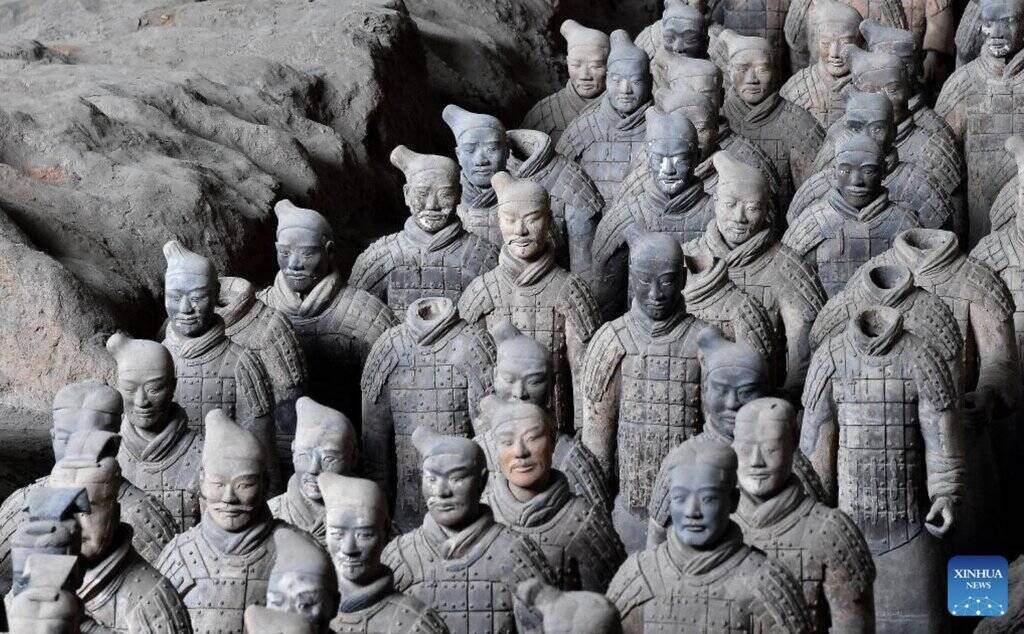Regarding the Qin Shi Huang Mausoleum, China Daily listed important archaeological discoveries made there over the past 50 years.
1. Terracotta Army pits 1, 2 and 3
Pit No. 1 was discovered in 1974 when local farmers drilled a well. Later, Chinese archaeologists discovered pits No. 2 and No. 3 to the north of pit No. 1 in 1976.
These pits form a satellite group about 1.5 kilometers away from the main tomb of Qin Shi Huang. The three pits cover an area of 14,260, 6,000, and 520 square meters, respectively. Here, Chinese archaeologists have unearthed about 8,000 terracotta warriors and horses, more than 100 chariot models, and more than 40,000 bronze weapons.

The Terracotta Army is arranged in military formation, with 3 divisions and 1 command center. This army represents the garrison force protecting Qin Shi Huang's capital Xianyang during his reign.
2. Bronze chariots and horses
In 1978, Chinese archaeologists discovered two large bronze chariots and model horses on the west side of the giant mound above Qin Shi Huang's main tomb.
The bronze chariots are realistically modeled after real chariots but are half the size of the real thing. The discovery of the bronze chariots gives an idea of what ancient royal chariots might have looked like.
3. Bronze waterfowl pit
In 2000, a satellite pit located outside the outer wall of Qin Shi Huang's mausoleum contained 46 bronze waterfowl, including swans, red-crowned cranes and giraffes, as well as 15 ceramic statues.
Some Chinese archaeologists have speculated that the ceramic figurines represent musicians playing musical instruments and domesticated waterfowl performing to the music. These were burial objects at the death of Qin Shi Huang, suggesting that they may have been objects representing the emperor's entertainment activities, reflecting the diverse cultural atmosphere of the Qin Dynasty.
4. Large-scale ancient tomb located west of Qin Shi Huang's mausoleum
Since 2013, excavations have been taking place at a tomb to the west of Qin Shi Huang's main mausoleum. This is a satellite tomb within the mausoleum complex.
This ancient tomb covers an area of 1,900 square meters. Here, Chinese archaeologists have excavated a large amount of pottery, bronze, jade, iron, gold and silver artifacts. The gold and silver camels found in this tomb are the first camels ever found in China.
Although the owner of this ancient tomb remains a mystery, it is one of the largest and highest-ranking Qin Dynasty noble tombs ever discovered and excavated. It is also one of the best preserved ancient tombs, according to Chinese archaeologists.











